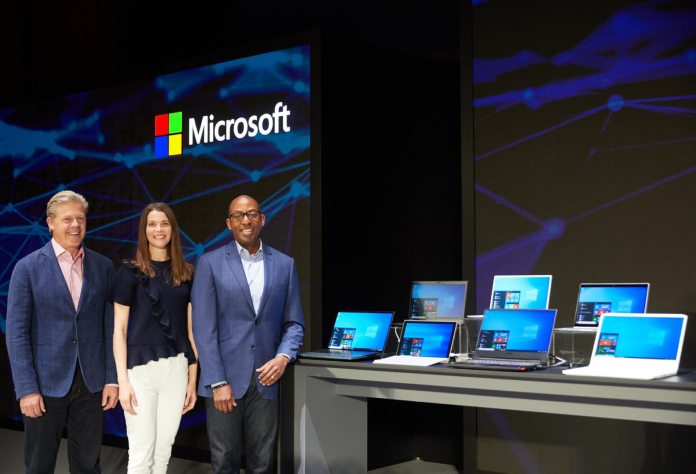At Computex yesterday, Microsoft discussed how it is moving Windows forward with a focus on expansion to new devices. Speaking at the event Nick Parker, corporate vice president of consumer and device sales, discussed how Windows 10 will spread to other form factors. This could be important for Windows 10 Lite because the SKU is believed to be designed for dual-screen devices to compete with Chromebooks. While Parker did not mention Lite specifically, he did say Microsoft is creating a modern OS with seamless updates. Parker says the company is working on a “modern OS updates are invisibly done in the background; the update experience is deterministic, reliable, and instant with no interruptions!” The company’s take on a modern computing platform will also be secure by separating the OS from applications. That seems like a cloud-based system like Google uses for Chrome OS.
Not Windows?
What’s perhaps most interesting about Microsoft’s accompanying blog post is that no mention of Windows is made. Does this mean the modern OS the company discusses will not be based on Windows and not called Windows 10 Lite? You can check out the details below or at the source. “These new modern PCs and innovative devices the ecosystem will continue to build and bring to market in the future require a modern operating system. An OS that provides a set of enablers that deliver the foundational experiences customers expect from their devices, and includes a set of delighters that deliver innovative human centric experiences. Enablers include seamless updates – with a modern OS updates are invisibly done in the background; the update experience is deterministic, reliable, and instant with no interruptions! A modern OS, is also secure by default, the state is separated from the operating system; compute is separated from applications; this protects the user from malicious attacks throughout the device lifecycle. Always connected -with a modern OS Wifi, LTE 5G will just work – and users never have to worry about a deadspot. All of a users devices are aware and connected to each other. A modern OS provides sustained performance, from the moment a user picks up their device – everything is ready to go – without having to worry about the next time the PC needs to be charged. These enablers will satisfy customer’s basic needs, but to truly differentiate we must also delight them.?A modern OS does this by enabling cloud-connected experiences that use the compute power of the cloud to enhance users experiences on their devices. These experiences are powered by AI, so a modern OS is aware of what a user is doing tomorrow and helps them get it done, and it enhances applications making them more intelligent. A modern OS is also multi-sense. People can use pen, voice, touch, even gaze – what ever input method a user wants to use works just as well as the keyboard and mouse.?Finally, a modern OS provides the ultimate in form factor agility. A modern OS has the right sensor support and posture awareness to enable the breadth of innovative form factors and applications that our partner ecosystem will deliver.”




